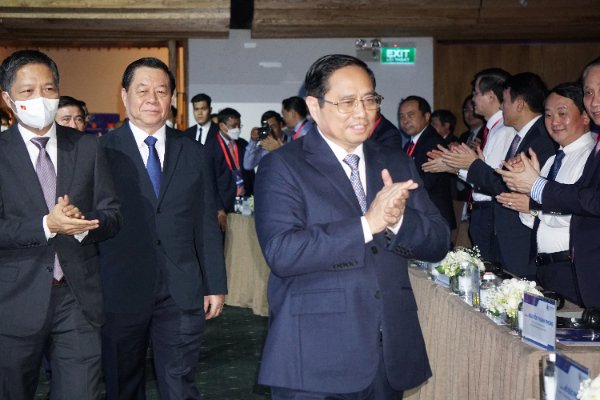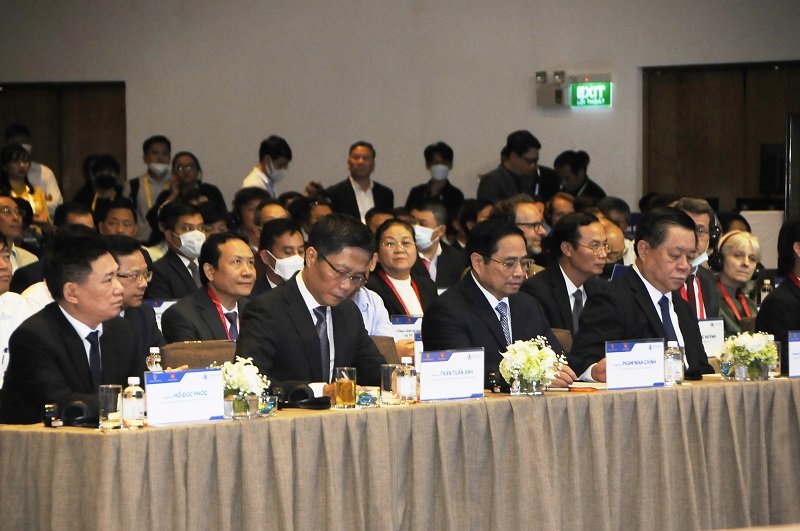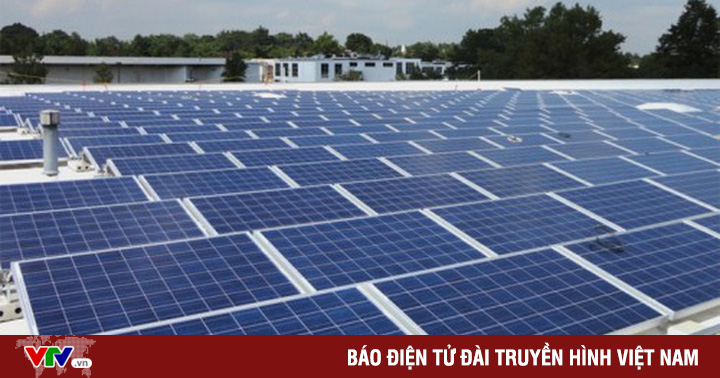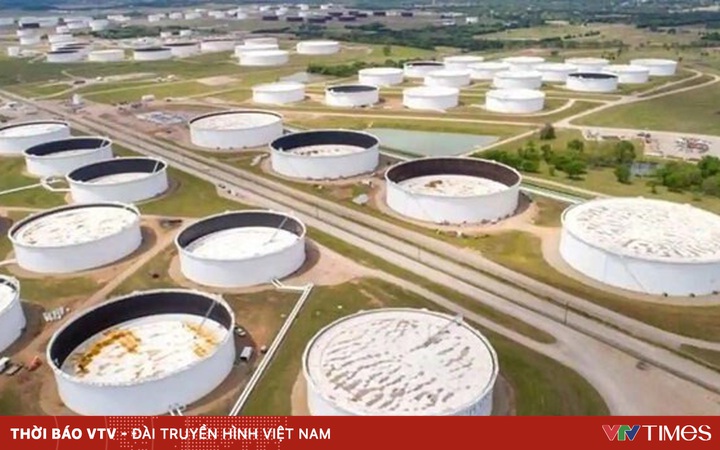“Vietnam cannot successfully industrialize and modernize if it only relies on FDI”

Prime Minister Pham Minh Chinh attended the forum. Photo: Nguyen Thuy
Vietnam is basically a capital-intensive, outsourcing and assembly economy
Head of the Central Economic Commission Tran Tuan Anh acknowledged that, besides outstanding achievements, the economy’s self-control capacity, adaptability and resilience to shocks or external impacts are still weak. The autonomy of the economy is strongly influenced by fluctuations in production activities in the foreign investment sector and some large markets.
Currently, in the economic structure, the FDI sector contributes up to 20.13% of GDP, accounting for 72% of total export value, about 50% of industrial output; If assessed based on the index of added value, revenue and employment, FDI enterprises dominate 12 out of 24 processing and manufacturing industries, playing a dominant role in 4 out of 5 industries. Vietnam’s largest exports are textiles, footwear, electronics, furniture production, and import-substituting processing and manufacturing industries such as rubber-plastics, basic metals, and other products. mechanical products.
Meanwhile, the majority of FDI enterprises are from emerging countries, especially from China; activities are mainly imported to serve production, from which the spillover effect to the domestic economy is still low. The number of technology transfer contracts of FDI enterprises is very modest, only about 1,000 contracts out of a total of nearly 27,500 foreign investment projects. In which, technology transfer including industrial property only accounts for 13%; the localization rate is low, averaging only 20-25%.
“Experience from other countries shows that Vietnam cannot successfully industrialize and modernize if it only relies on FDI,” emphasized Mr. Tuan Anh.
Besides, the results of the analysis of the IO interdisciplinary structure show that the Vietnamese economy is basically a capital-intensive economy and mainly outsourcing and assembling; Although the contribution to TFP’s growth has increased from 34.3% in the 2011-2015 period to 45.9% in the 2016-2020 period, in the structure of TFP, the role of science and technology only contributes at a small rate. modest 28.44%.
Foundational factors at a low level
In recent years, although the ranking of the innovation index has improved, the fundamental factors are still at a low level. Total spending on research and development of Vietnam both public and private reached only 0.53% of GDP in 2019, much lower than the world average at 1.7% and some countries like Thailand 0 .8%, Malaysia 1.4%, China 2.1%; creative capacity is still low.
The number of Vietnam’s patents granted by world-renowned agencies is only 1/3 of Thailand, 1/11 of Malaysia, 1/3170 of China, the ratio of patents to 1 million people is 0.21 and ranked No. 91/141 countries; In 20 years (2011-2020), the number of patents granted to Vietnamese people only accounts for 4.62% of the total number of granted patents.
The industry’s autonomy is still at a low level with most of the technology, machinery, equipment, spare parts and key materials imported for industrial production. Vietnam has a trade deficit of 9.3 million tons of hot-rolled coil/year, importing 85.4% of fiber (60% from China, 13.7% from Korea and 11.7% from Taiwan). leather shoes imported 40-45% of raw materials from abroad, 75%-80% of raw materials and auxiliary materials for plastic production must be imported…

Head of the Central Economic Commission Tran Tuan Anh. Photo: Nguyen Thuy
The technological level of industrial enterprises is still low, most of them are using technology that is 2-3 generations behind the world average. In the field of agriculture, Vietnam must import over 70% of machinery and equipment for agriculture; Some varieties of crops and livestock are still dependent on imports, such as 80% vegetable varieties and 60% maize varieties.
In general, Vietnam’s economy is highly integrated, has great openness, but focuses on a few markets, and the structure is unsustainable, leading to dependence.
The above inadequacies have made economic growth not reach the set strategic goals, the growth band tends to decrease gradually over a 10-year cycle (in the period 1991-2000 reached 7.6%/year, in the period 1991-2000, it reached 7.6%/year). 2001-2010 down to 6.6%/year, the period 2011-2020 averaged only 6.17%/year). Per capita income increases at a slow rate and remains at a low level, with the risk of lagging behind existing countries in the region (in terms of comparison with other countries in the region, Vietnam’s income is still low). South is 72.7% of the Philippines; 53.6% of Indonesia; 31.6% of Thailand; 16.4% of Malaysia and less than 5.0% of Singapore).

State leaders attended the Vietnam Economic Forum on the afternoon of June 5. Photo: Nguyen Thuy
Quality, efficiency and competitiveness of the economy are still weak; requirements to implement industrialization and modernization in the direction of shortening facing many challenges; Labor productivity is still low compared to development requirements. In 2020, according to a report by the Asian Productivity Organization (APO), Vietnam’s labor productivity lags behind Japan by 60 years, Malaysia by 40 years and Thailand by 10 years.
The above facts show that, in order to achieve the goal by 2030, Vietnam will become a developing country with modern industry, high middle income, and by 2045, a developed country with high income. The urgent, pivotal, consistent and long-term task is to build a dynamic, fast and sustainable, independent, and self-reliant economy on the basis of science, technology, and innovation associated with it. with improving efficiency in foreign affairs and international integration.
Mr. Tuan Anh acknowledged, after 2 years of the Covid-19 pandemic, Vietnam’s economy is continuing to gradually return to the fast growth trajectory like before the epidemic. However, the impact of the recent pandemic along with the emergence of many new events in the international context, typically the Russia-Ukraine conflict, has been asking Vietnam to speed up and drastically more, more substantive and more effective than building an independent and self-reliant economy associated with extensive and effective international integration.
at Blogtuan.info – Source: danviet.vn – Read the original article here


